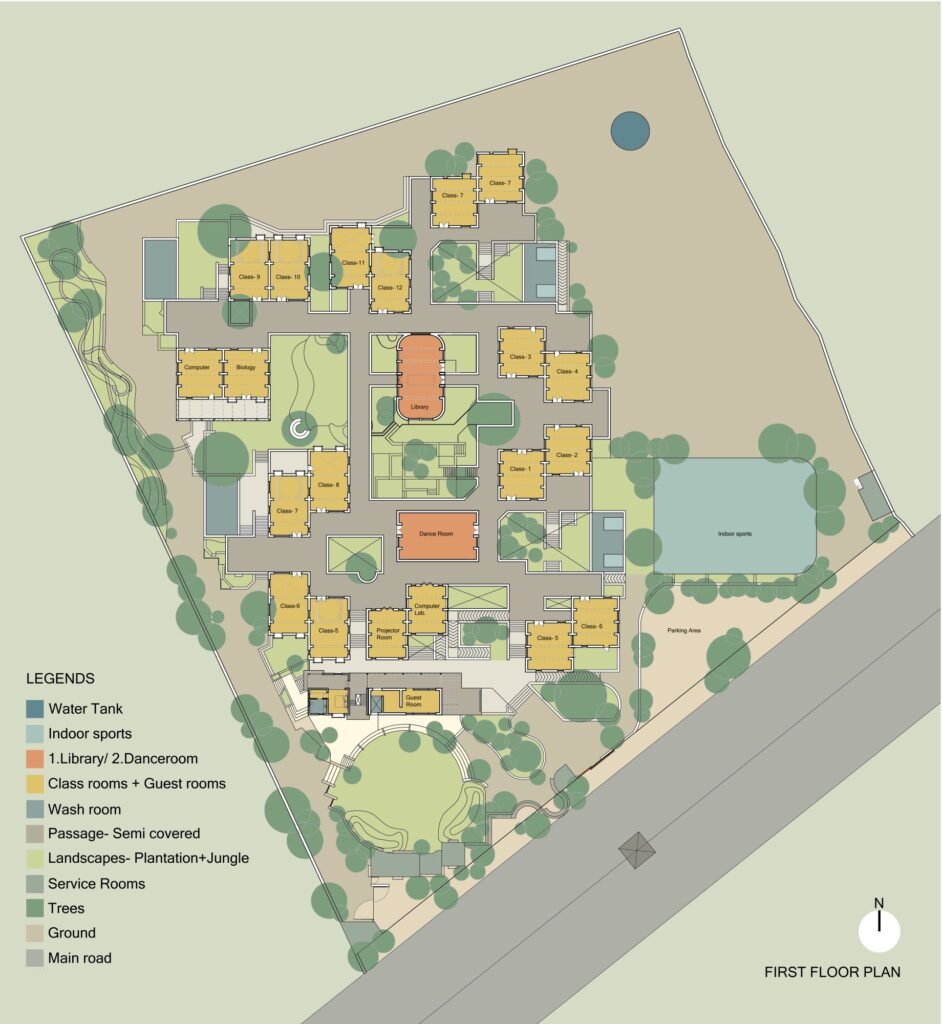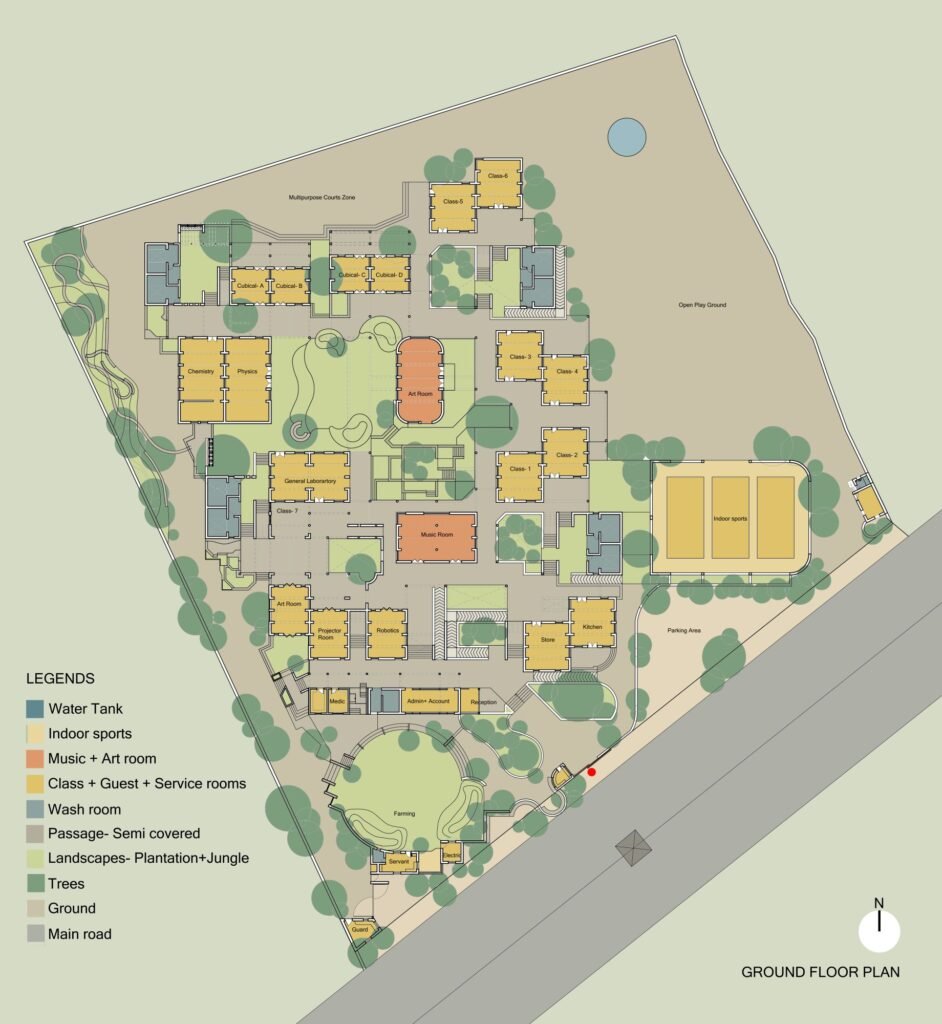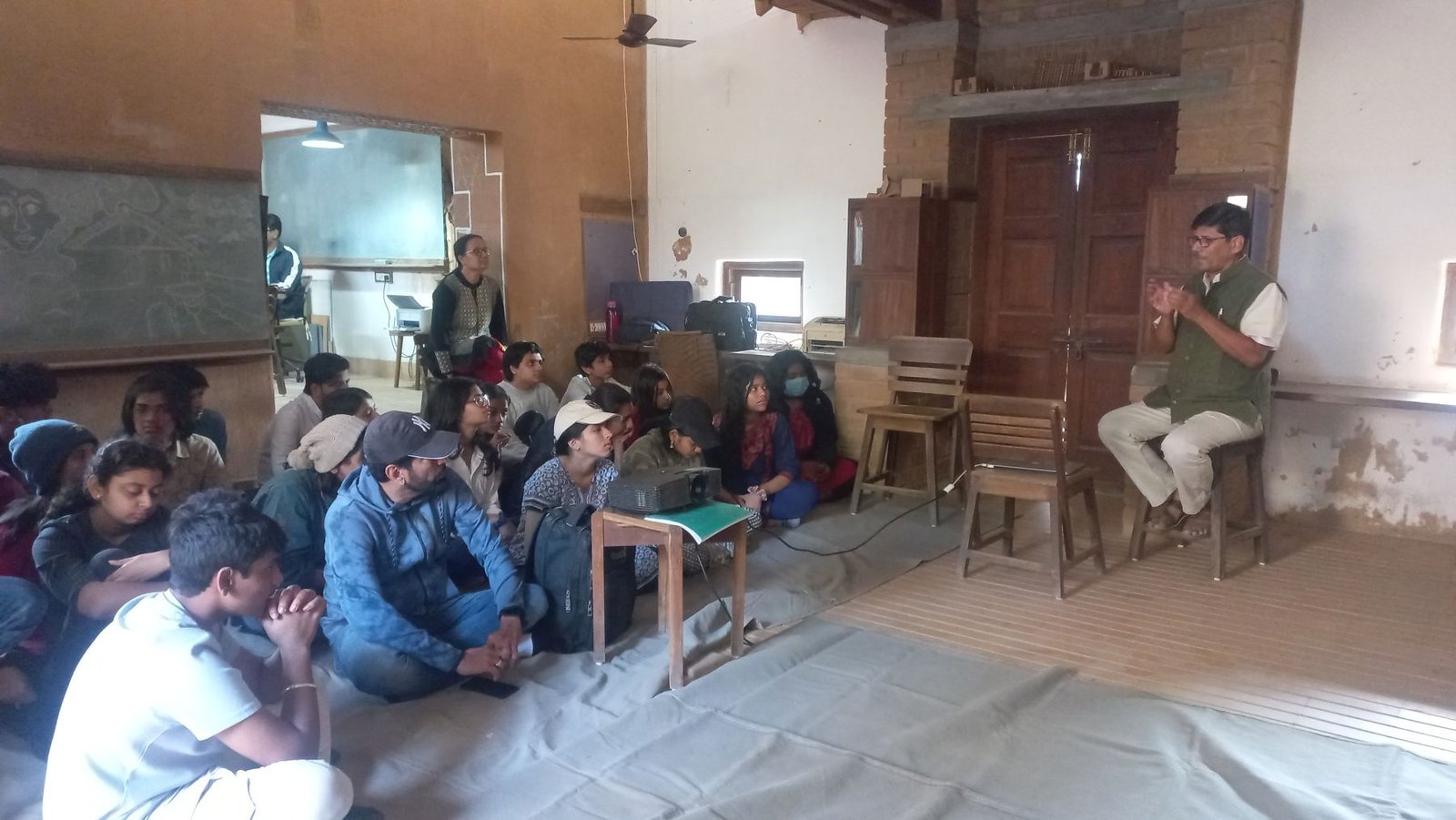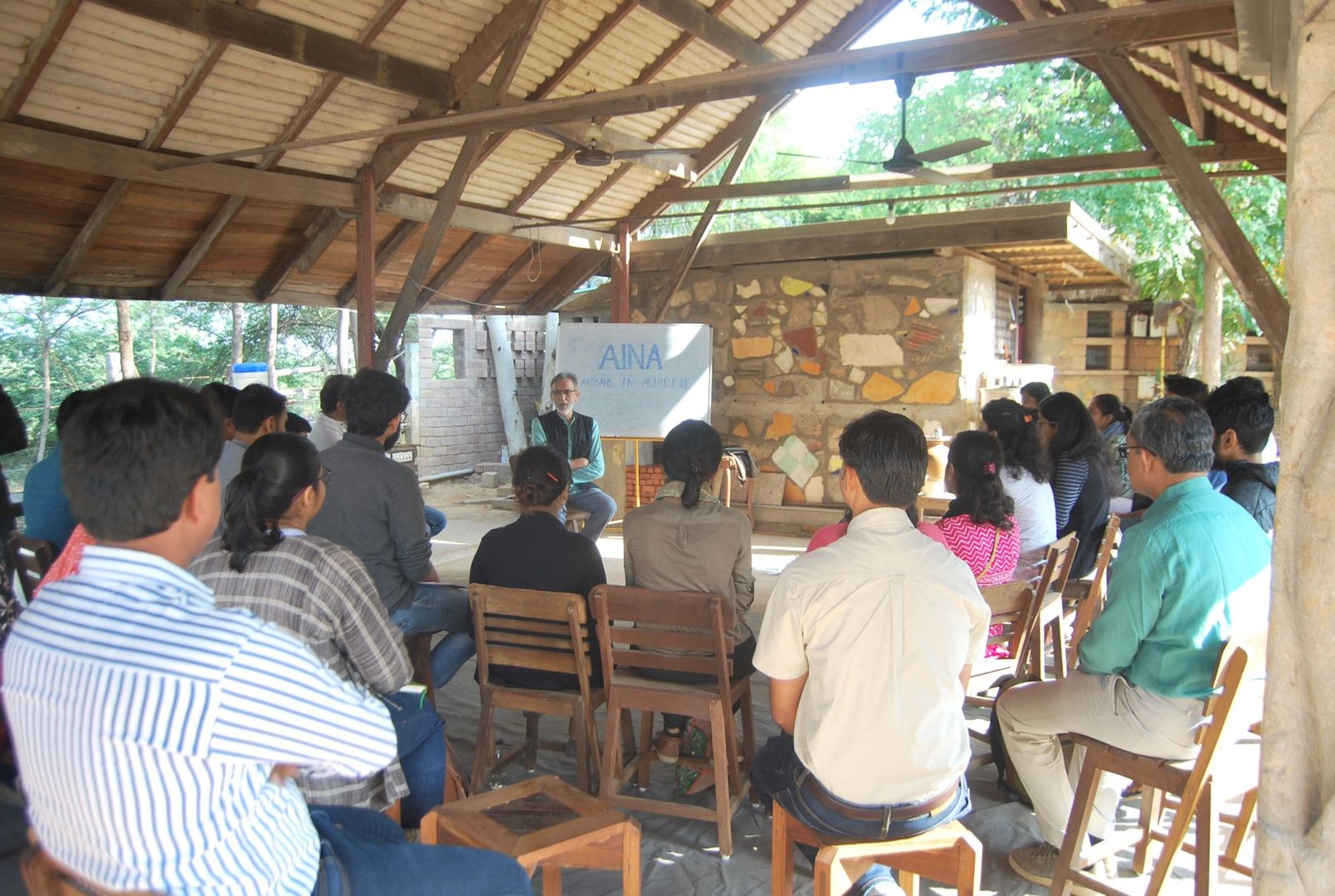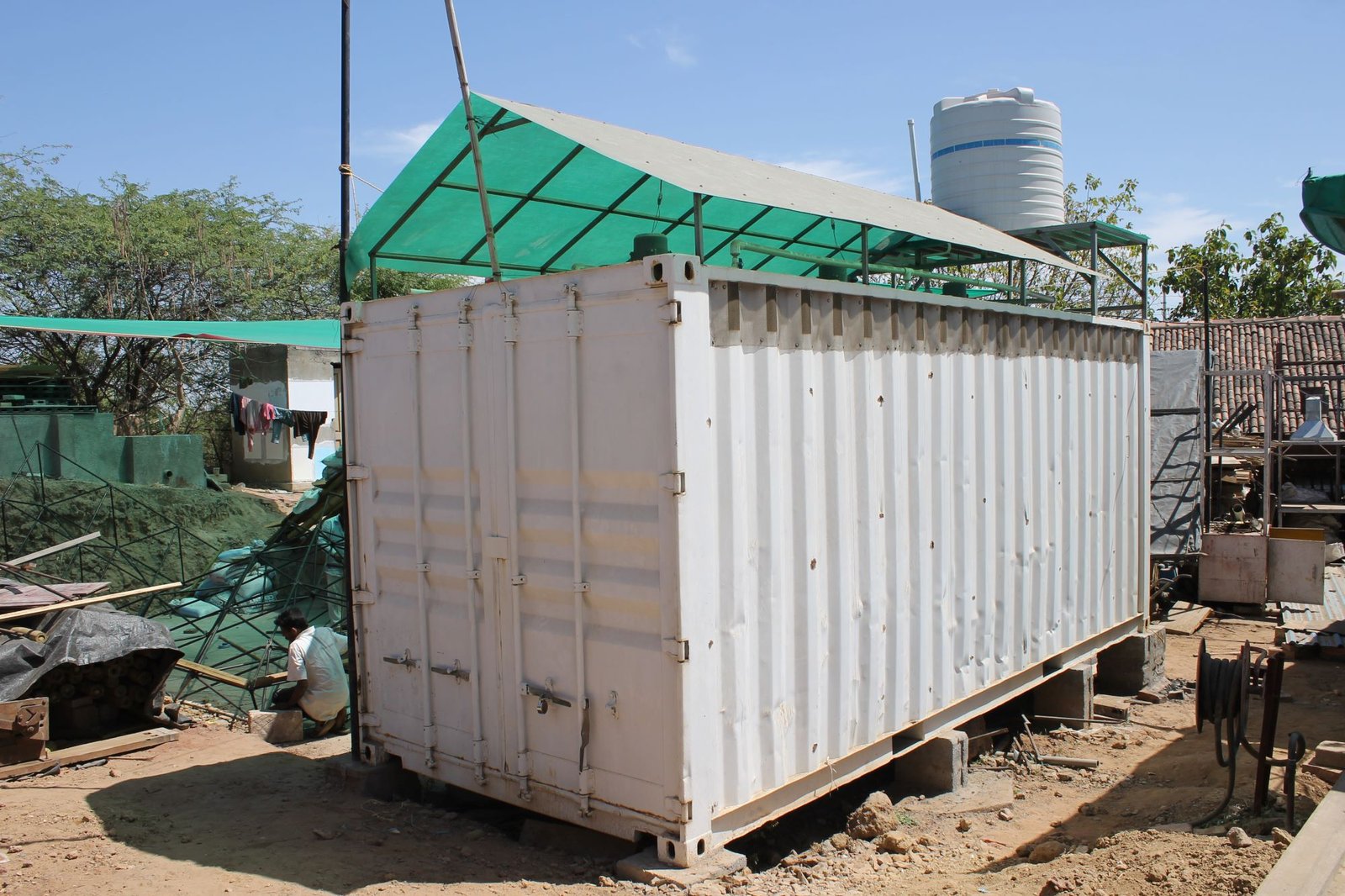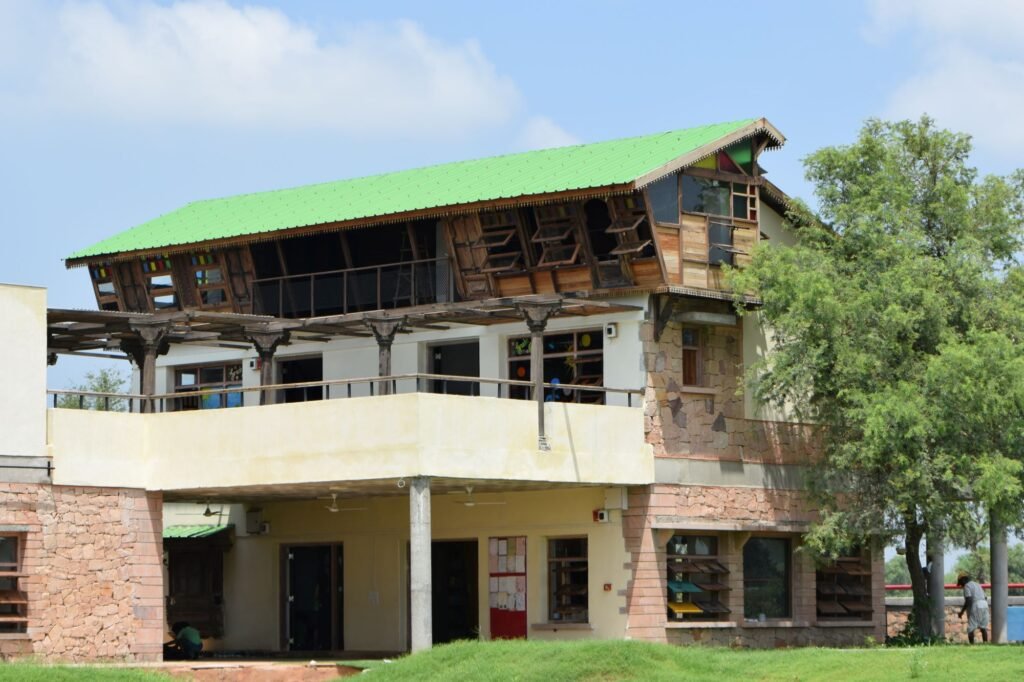
About
Alma Mater is an alternate school designed and built to withstand the hot, arid climate of Jodhpur. The design celebrates Jodhpur’s traditional crafts and artisans.
Alma Mater is a school in Jodhpur that peruses a mission wherein the children will develop moral, physical, emotional character with empathy for the world around. The pedagogy is based in making children learn by becoming aware at all times of their experience; rooting learning in an appreciation of how society and the world functions. The partnership with Hunnarshala was to develop a campus that represents their values and helps create creative opportunities for learning and teaching. The partnership agreed that the campus will represent the ideals of sensitivity to the environment; an appreciation of the crafts, working with ones hands; and an appreciation of history.


The design is based on the principle of interconnected courtyards that is best suited for tropical, hot arid climates. It follows passive architecture that analyses the climate of Jodhpur to reduce the use of energy and maintain comfort conditions, especially for the high summer temperatures (+40 degrees Celsius). To reduce the carbon foot print of the buildings, a large majority of the materials are procured locally with low embodied energy; the key materials are stone, mud, lime and recycled wood. The campus will grow a huge diversity of arid Rajasthan flora, so the children come to respect and appreciate it. Rajasthan has a rich craft tradition in textiles, pottery, iron smithy, wood carving, lime, stone etc. The campus tries to celebrate these traditions, albeit with modern expressions.
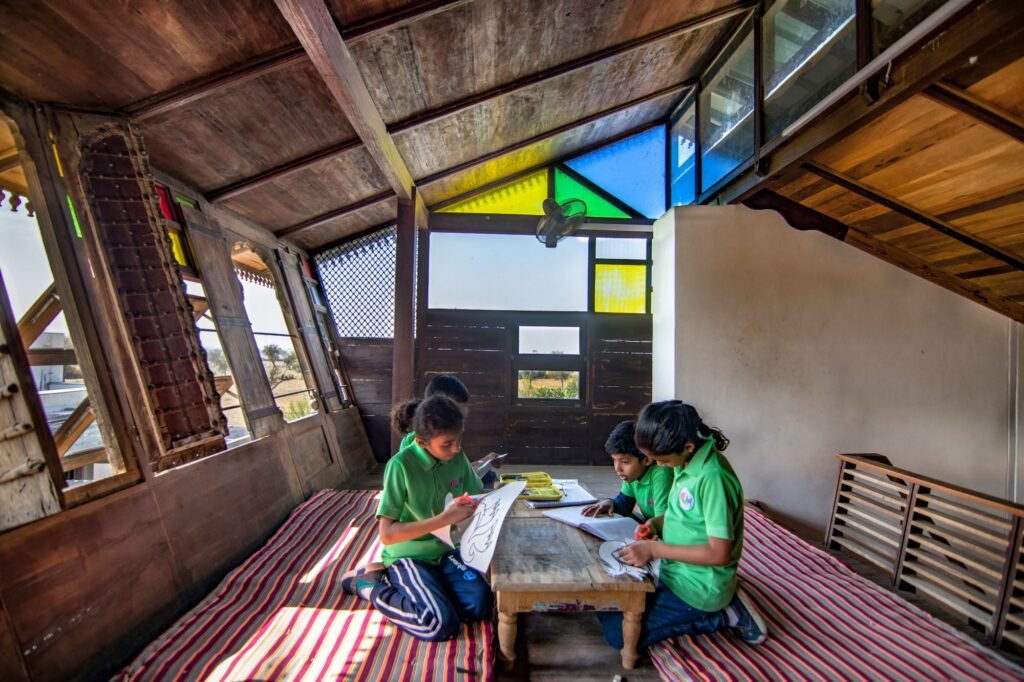
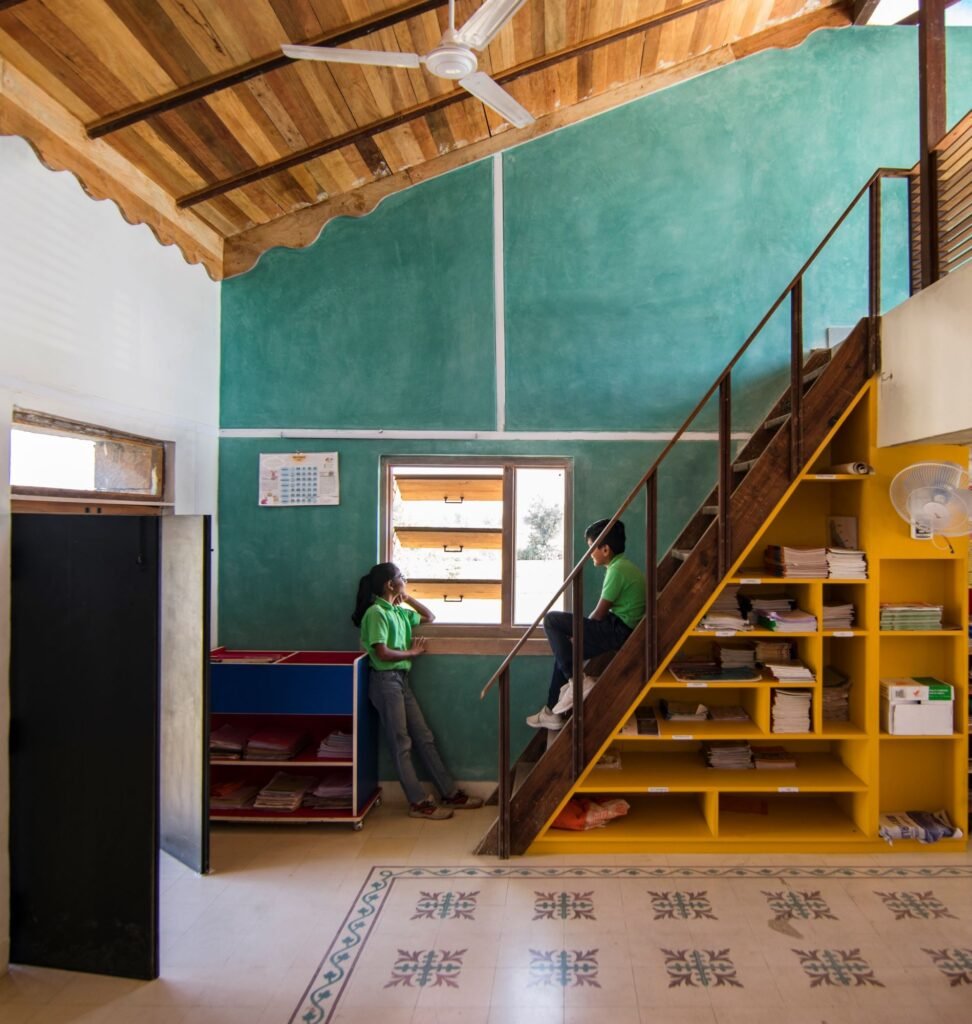
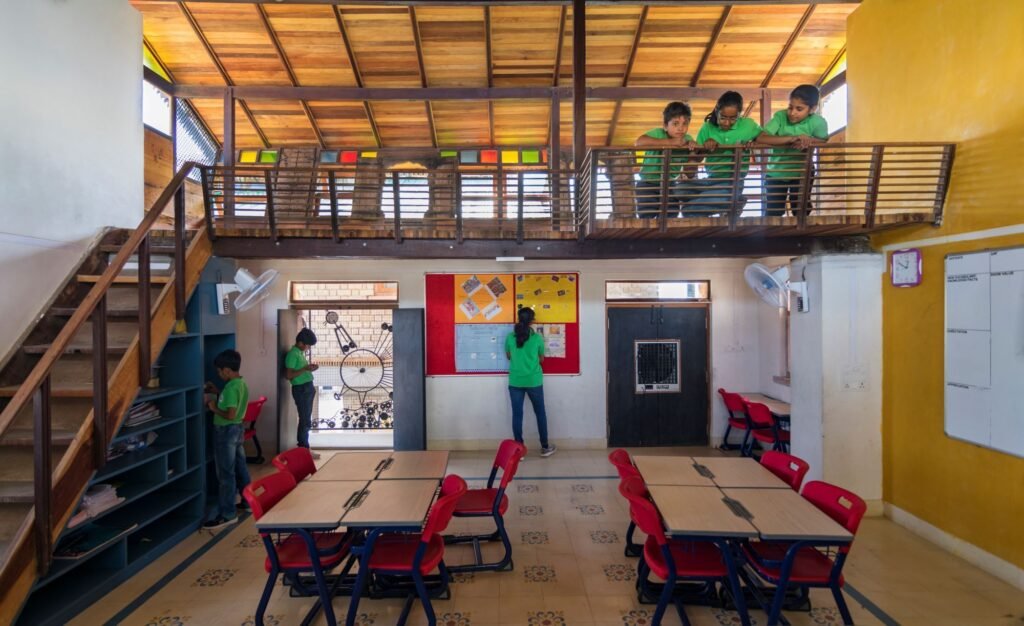
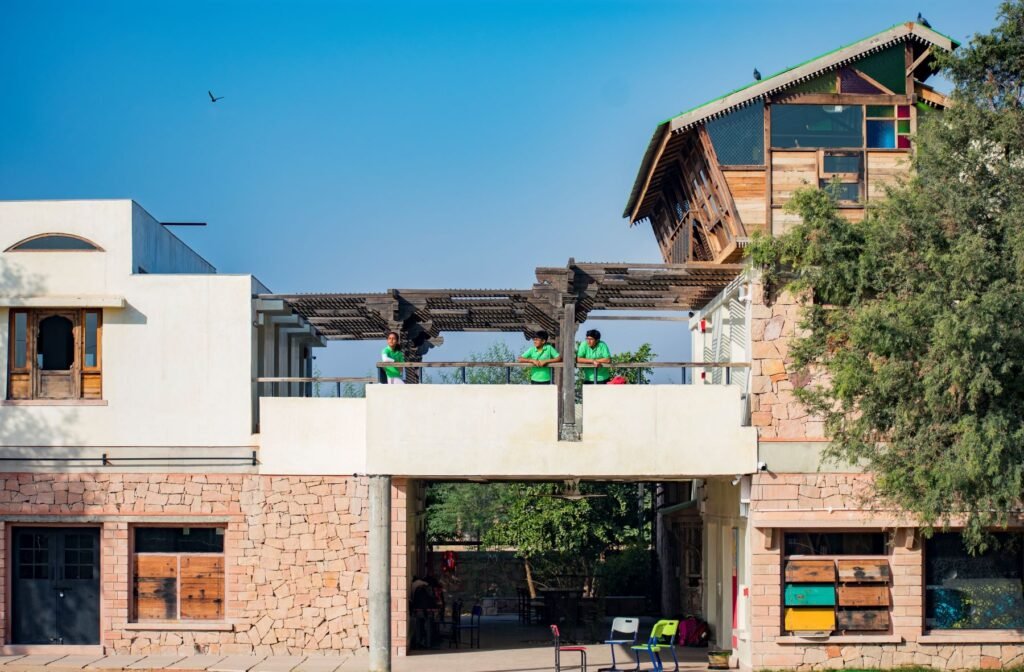
Technology, Material, and Craft
To reduce the carbon footprint of the buildings, a large majority of the materials are procured locally with low embodied energy; the key materials are stone, mud, lime and recycled wood. The campus will grow a huge diversity of arid Rajasthan flora, so the children come to respect and appreciate it. Rajasthan has a rich craft tradition in textiles, pottery, iron smithy, wood carving, lime, stone etc. The campus tries to celebrate these traditions, albeit with modern expressions.
Stone and Lime: Jodhpur is one of the few places where lime has not been forgotten. Public perception agrees that a house plastered with Kodi or lime plasters will remain cool and will not require maintaining for decades. So, the school has not only used Kodi plaster in the entire campus but has also used lime as the mortar for the stone walls. The inside plasters have added some color tints to lime as well. While the mortar mix was designed and tested by Hunnarshala experts, the plasters were done by Beejaram. He is a traditional lime, Kodi, plaster artisan from a village close to Jodhpur. He learnt the technique from his uncle. The family tradition is to prepare the lime putty for at least six months before it is used! As lime is not standardized, the lime putty prepared by Beejaram has been time tested for its performance parameters through tradition… that he meticulously follows.
The Jodhpur Artisans have also used sand stone in exquisite ways, both for its strength and spanning properties and its beautiful carving and color combinations. However, these are expensive propositions. The school uses the cheapest available stone as random rubble, but got skilled artisans to make it look exquisite!
Earth: The school site used to be a farm with well drained soil, which is ideal for making stabilized earth blocks. That is soil blocks made in hand pressed machines with a little bit of cement and a dash of lime. Hunnarshala artisans – Ramesh with his team used the excavated soil for the foundations to make ——— thousand blocks. These were used in the building for making walls and roofs.
Most of the ground floor rooms are covered in vaults made from these earth blocks. In many of the first floor classrooms, we invited Nawab from Uttar Pradesh to make shallow domes. This is a Mogul tradition that a small group of artisans have preserved, handing it down the generations for over five hundred years! The advantage of making earthen flat roofs is that it reduces the requirement of steel and cement drastically and yet is able to make flat roofs to build above.
Most of the passageways have been made using the technique called ‘filler slab’. In this technology the weight of the concrete slab is reduced without compromising on its strength by placing terracotta bowls to ‘scoop out’ the concrete between the steel grids of the concrete. This reduces the use of both steel and cement by 15-20%. The terracotta bowls were made by a local potter – Ramzan from Salawas village. All the slabs exposed to the sun above have been filled in with earthen pots to keep the rooms below cool in the summer heat.
Wood: Wood has been used liberally in the project. All the first floor sloping roofs, mezzanines, windows, doors and louvered terraces use it. However, all the wood used in the project is recycled wood; not a single tree has been sacrificed to make this building. The wood is derived from ship breaking yards and antique dealers. In fact the design of the school has been built around all the existing indigenous Khejri trees on site, adding shade, protection from the sun and the chirping of birds to the campus.
The majority of the sloping roofs face north to avoid the harsh summer sun. And the roofs have a cavity with an opening on both ends to wind sweep the heated air within. It also has an aluminium foil in the cavity to cut off the UV rays that are responsible for much of the heat. The understructure of the roof and the lower surface is made from teak wood giving warmth and texture to the classrooms.
The classroom has North light pouring in from the roof that provides uniform reflected light. The windows themselves are made of louvered or shutters made from wooden planks that can be closed to cut off the tropical glare.
One of the parents of a student in the school owns a large export business in antique wooden building artifacts. He was generous to provide several carved columns, windows and doors at reasonable prices for the school. They provide an aesthetic and a context to the historical town of Jodhpur.
Craft: Through the building of the school, Hunnarshala is working with the master craftspeople of the Marwar region that Jodhpur is part of. The objective is to contemporarise the crafts to add detail and aesthetics to the building. This will help students become familiar with their region’s crafts and value the handmade skills. Two crafts that have been explored in phase 1 are metal waste murals and mosaics for flooring.
Terrazzo: This is an old technique to make floors using marble chips in cement and then polished to a finish. As the floor gets used, the shine keeps increasing. It is also made with artistic motifs and designs. Recently an entrepreneur from Bikaner, Rajasthan has begun making terrazzo tiles using beautiful designs. The school has explored both the in-situ and tiled versions.
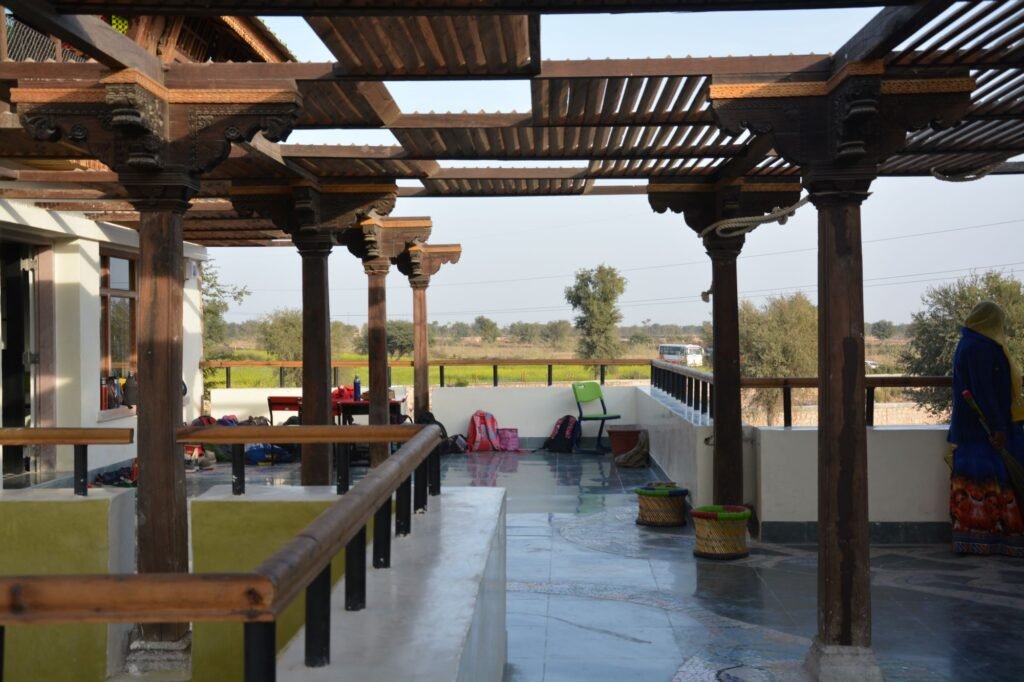
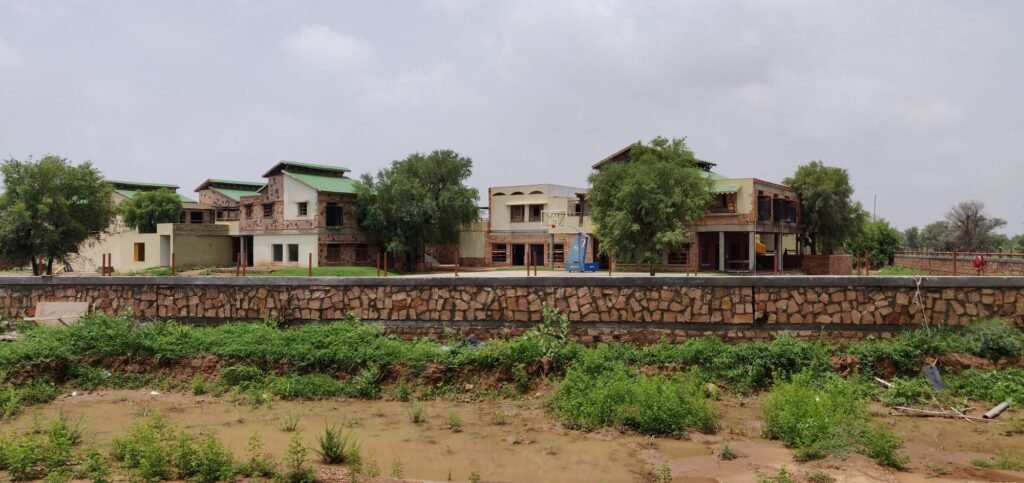

Design Process
User Engagement: Overall layout of school is evolved around courtyard and classroom considering continuous flow of space and blending activities inside and outside as well. Spatial relation of one space with another space is explored further with the participatory exercise that took place in school with students, teachers and leaders. Children also contributed towards the building processes involving various crafts such as pottery and metal jailis as part of various workshops.
Climate Response: The design is based on the principle of interconnected courtyards that is best suited for tropical, hot arid climates. It follows passive architecture that analyses the climate of Jodhpur to reduce the use of energy and maintain comfort conditions, especially for the high summer temperatures (+40 degrees Celsius).
Spatial Organisation: The school is a set of courtyards defined by existing blocks, one or two story’s high, and connected by a set of platforms and ramps. The configuration of built up space creates an equal amount of useable space outside as it does inside the buildings. Site is overall flat land. Courtyards and platforms are created at different levels in order to have playful and exciting experience as one moves from courtyard to courtyard. Each courtyard will render different experience and will be accessed either through steps, ramps, slides or tunnels. Classrooms designed are of equal footprint but will have 2 – 3 different configuration based on the age group. Classroom for younger kids needs more of informal spaces. In order to achieve that, classrooms are designed with split levels and a loft where various activities can take place together or in small groups. Classroom for elder kids are of single level with loft reflecting a more formal setup. Each classroom opens in 2 or 3 platforms at different levels allowing activities of different scale. Library is also designed with split level allowing ample of light and views inside.
